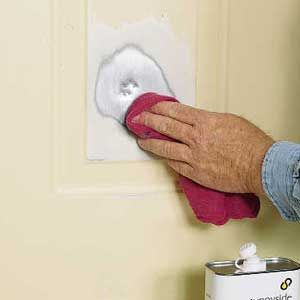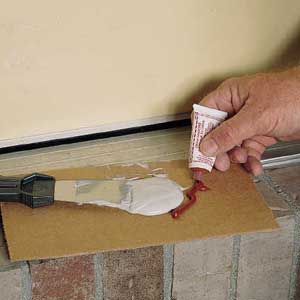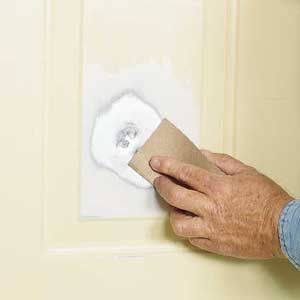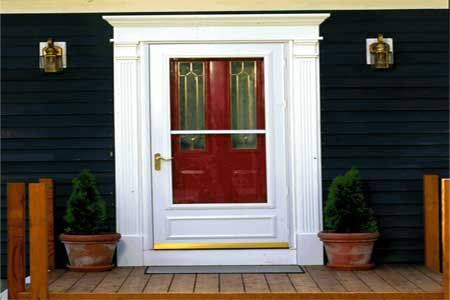Steel entry doors are popular for a reason—they offer better security and energy efficiency for your home as compared with their wood counterparts. However, even these durable doors can still suffer dents and scratches. If your steel door has a dent and you’re thinking about replacing it, there’s a good chance you can still breathe new life into it with the right repair techniques. This guide will walk you through the process of fixing a dented steel door from start to finish.
Assessing the Damage
Despite their strengths, steel doors aren’t impervious to damage—they can dent if struck by hard objects. These dents may be unsightly, but they’re often repairable with the right techniques and materials.
However, before diving into repairs, you’ll need to assess the extent of the damage to your steel door. If your door is too far gone, it may be best to just replace it. If the dent is manageable, you can repair it fairly easily.
When To Repair vs. Replace
Most dents in steel doors are repairable, but if the door has extensive damage like deep gouges or rust, it’s usually more cost-effective to replace the entire door. Also, if the door’s structural integrity is compromised, you should replace it. When in doubt, it’s better to shell out the cash for a brand-new door than leave a broken door on your home.
Tools and Materials Needed
If you determine that your door is repairable, it’s time to gather your tools and materials. For best results, make sure you have everything you need on-hand before you start repairing the door.
Essential Repair Supplies
For repairing a dented steel door, you’ll need:
- Auto-body filler
- Hardener
- Putty knife
- 6-inch-wide plastic spreader
- Sandpaper (80-grit, 150-grit, and 400-grit wet/dry)
- Rubber sanding block
- Rust-inhibiting primer
- Enamel trim paint matching your door color
- Clean cloths
- Acetone or rubbing alcohol
Recommended Safety Equipment
Safety should always be a priority when working on any DIY home projects. For this project, you’ll need the following items:
- Dust mask
- Safety goggles
- Work gloves
Step-By-Step Dent Repair Process
Once you have your tools and materials, you can start the repair process. Follow these steps carefully to bring new life to your dented door.
Preparing the Damaged Area
Start by sanding the dented area down to bare metal using 150-grit sandpaper. Be thorough and remove paint from the deepest parts of the dent. Once sanded, clean the area with a soft, clean cloth dampened with acetone or rubbing alcohol to remove any dust or grease.

Applying Auto-Body Filler
Be sure to use auto-body filler for a successful dent repair. Don’t use spackling paste or wood putty since these won’t bond well with metal. Instead, use a product specifically formulated for metal surfaces, like the Bondo Auto-Body Repair Kit.
To apply the filler:
- Blend the filler with the hardener according to the product instructions.
- Use a plastic spreader to apply the filler to the dent, slightly overfilling the area.
- Allow the filler to cure completely, which usually takes about 30 minutes.
Be sure to consult the product instructions for the cure time. When in doubt, wait longer. It’s best to make sure the filler has cured completely before you sand it down.

Sanding and Smoothing
Once the filler has cured, it’s time to smooth it out:
- Start with 80-grit sandpaper on a rubber sanding block to remove high spots.
- Switch to 150-grit sandpaper to blend the filler with the surrounding surface.
- If you find any low spots, apply a thin coat of filler and sand again once it cures completely.

Priming and Painting
Once you fill and smooth out the dent, you’re ready to prime and paint the repaired area. While this step may seem purely aesthetic, a solid paint and primer coat can help protect your door for years to come. Because it’s so important, take your time and use high-quality materials for the best results.
Choosing the Right Primer
Be sure to select a primer specifically designed for metal surfaces. A rust-inhibiting automotive primer or a brush-on metal primer are both good choices. Spray primers often dry quickly and are cost-effective.
Matching Paint Colors
To ensure a seamless repair, you’ll need to match the paint color of your door exactly. Many paint stores can color-match using a sample from your door. If you can’t find an exact match, consider repainting your entire door. If you’ve ever thought about changing colors, now’s a good time to do it. Regardless of what color you decide on, be sure to use an exterior-grade enamel paint for durability.
Application Techniques
Follow these steps for a professional-looking finish:
- Mask off the area around the repair with newspaper.
- Apply two light coats of primer, allowing each to dry completely.
- Sand the primed area lightly with 400-grit wet/dry sandpaper wrapped around a sponge.
- Apply two light coats of paint, using vertical strokes to minimize brush marks.
Long-Term Value of Repairs
While repairing a dented steel door requires some time and money, it can be worthwhile in the long run. Steel doors are more energy-efficient than wooden doors, so despite any initial investment, they can even help save you money over time.
For more on the energy benefits of steel doors, check out the United States Department of Energy’s guide to energy-saving doors.

